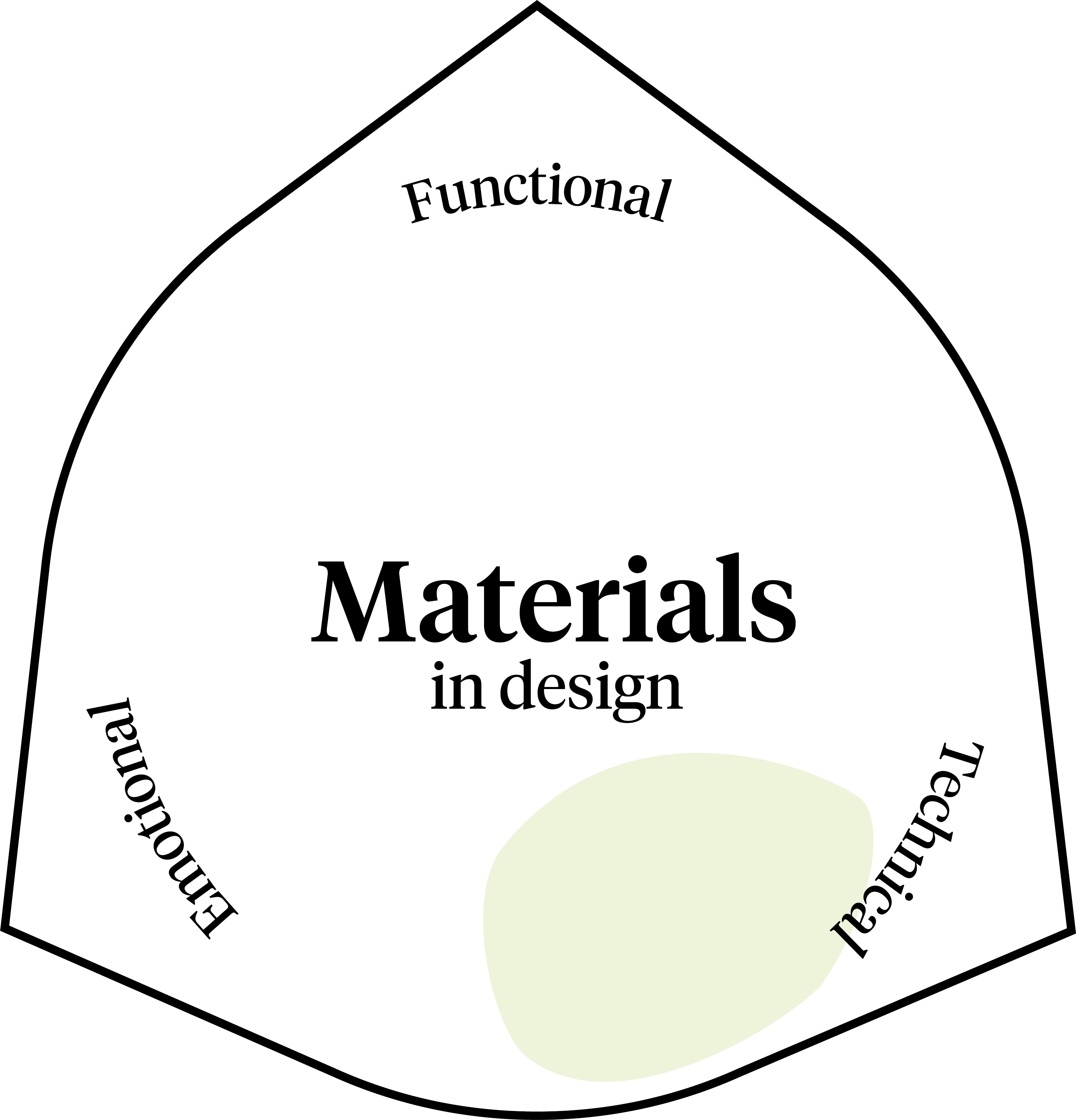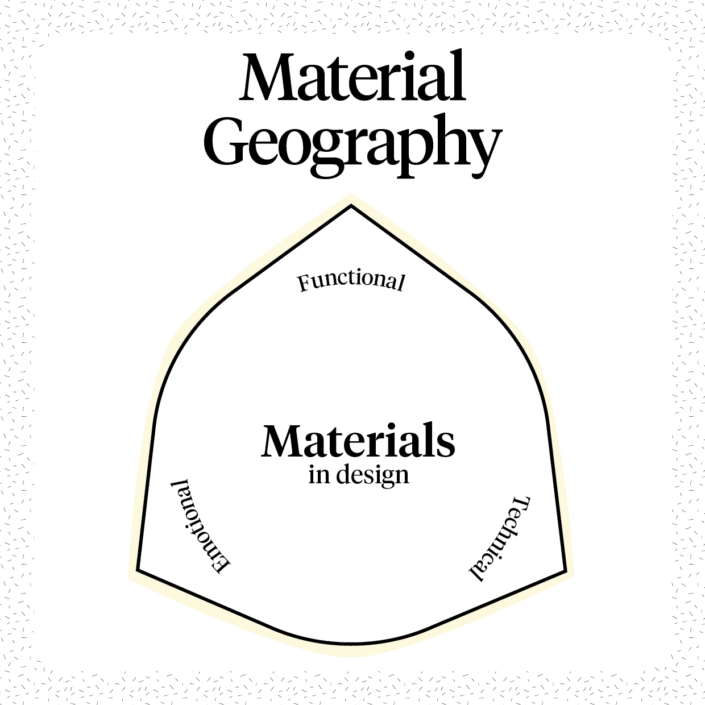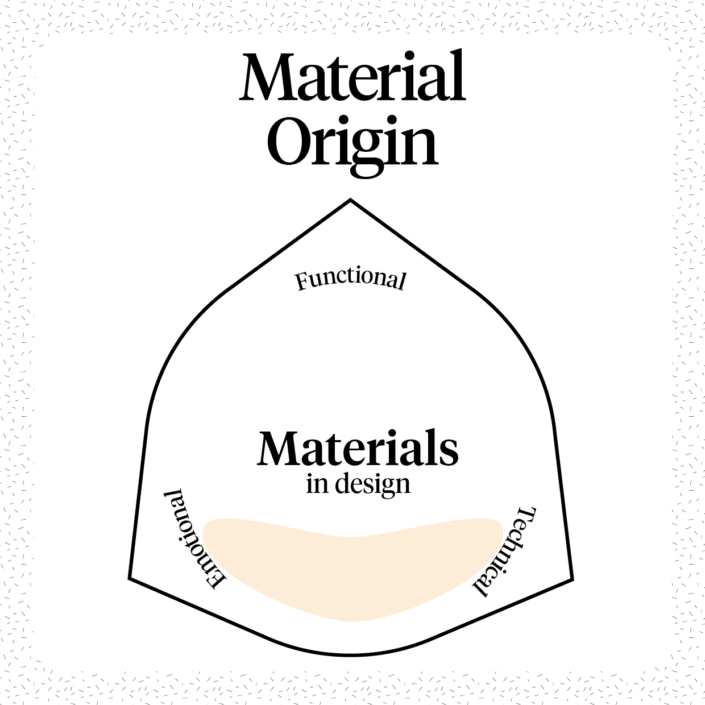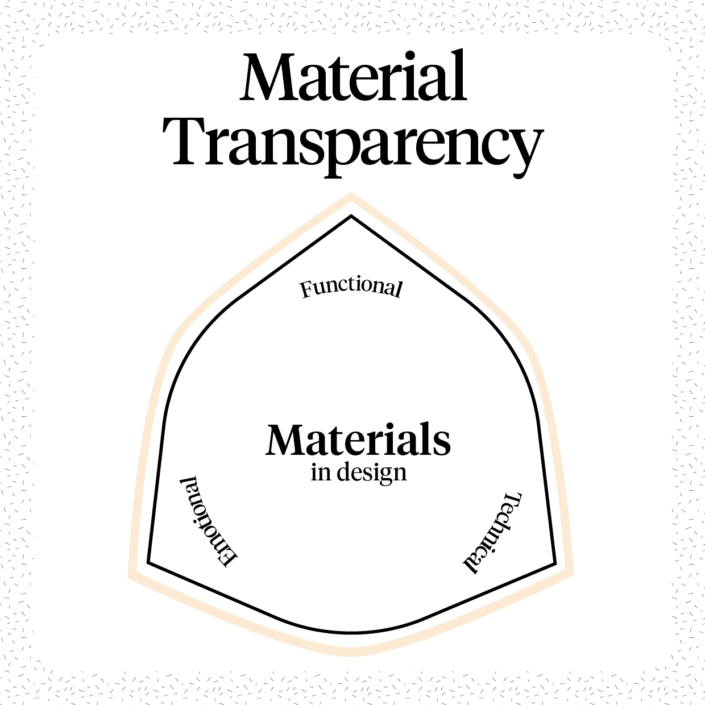What?
Taking into account the bio-ecology of a material means to consider it in relation to interactions between plants, animals, humans and cultures and thus the impact of materials use in a larger eco-system. On a micro-level this includes the ecological footprint of a material throughout its lifecycle; on a macro-level the implications of resource promotion globally.
Why?
Most materials undergo heavy processing before they reach the market. Reduced environmental impact through responsible use of energy and natural resources, maintenance of biodiversity, preservation of regional ecological balances, enhancement of soil fertility and maintenance of water quality and minimising waste generation are desirable aspects.
Challenges
- Working with bio-ecologies can require specialist knowledge and/or collaborations as it may span several knowledge domains.
- Lack of transparency and/or data can be barriers for gaining insight into interactions in a larger eco-system.
- Certifications may not be compatible across systems, countries and organisations.
Examples
- The Spanish company, Organic Cotton Colours applies bio-dynamic agricultural strategies including using natural colours of cotton fibres.
- The Global Organic Textile Standard (GOTS) is an international standard for organic textiles, predominantly used for cotton fibres.
- The refinement of metals from mined minerals requires large amounts of energy and generates a lot of waste.
Further Reading
Demos (2016). Decolonizing Nature. Contemporary Art and the Politics of Ecology. Sternberg Press.
Smith et al. (2019). Organic Farming Provides Reliable Environmental Benefits but Increases Variability in Crop Yields: A Global Meta-Analysis. Frontiers in Sustainable Food Systems, vol 3, article 82.








